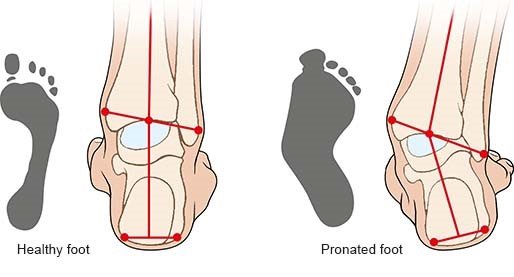What causes foot deformities?
Foot deformities or misalignments (wrong positions of bones) can either be present at birth or develop over time. Putting abnormal strain on the foot or wearing tight shoes may play a role. Further risk factors include injuries, inflammations and being overweight, as well as diseases such as osteoarthritis, rheumatoid arthritis, or brain diseases. Genes usually play an important role: For instance, some people have weaker tendons and ligaments, so the supporting structures in the foot that connect the bones can’t always hold everything in place properly. Sometimes children’s feet may appear to be deformed, but are in fact normal. This is because young people’s joints and bones are still developing and changing.





